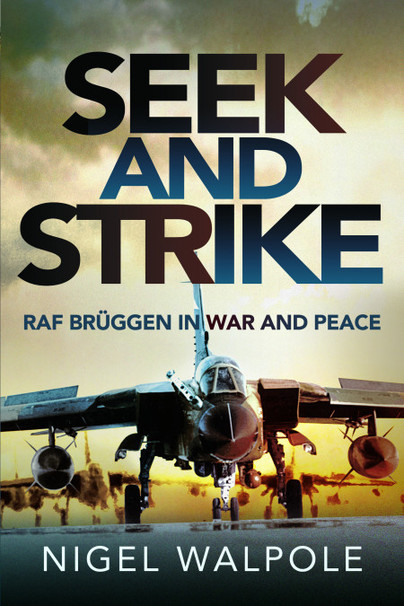Guest Post: Nigel Walpole – A Virtual War
We felt at peace with the world on that quiet Sunday in February 1978 at RAF Brüggen, our biggest strike/attack base in North Germany; there was no sign of life in the four corners of the airfield, each with a squadron of 15 Jaguar fighter-bombers, hidden in their Hardened Aircraft Shelters (HAS). Rows of Bloodhound surface-to-air missiles (SAM) pointed silently but menacingly to the east, but little could be seen of our mobile Rapier SAM squadron in their compound to the west, nor the squadron of Royal Engineers which cared for our infrastructure.
The peace was deceptive; while sailplanes from our gliding club were the only aircraft flying that day they were watched by a single controller in Air Traffic Control (ATC). Likewise, the Combat Operations Cell (COC) was manned, ready to launch a number of nuclear armed Jaguars from the Quick Reaction Alert (QRA) site, held at very high readiness. Armed police and their dogs were on patrol there and around the nuclear storage area, while our emergency services and another 300 policemen were ready for any contingency.
A few of us were having a lunchtime drink with the station commander in the officers mess when this tranquility was shattered by the ominous sound of the station hooter, calling us to arms. Simultaneously, the station commander received the message from the COC that some 100 NATO officers, each a specialist, had, quite legitimately, passed through the station’s heavily guarded main gate and were dispersing to report on the station’s reaction to their war scenario at their assigned locations. RAF Brüggen was going, virtually, to war.
The alert triggered a complex but well rehearsed call-out plan to bring Bruggen’s servicemen to work from married quarters and civilian hirings off base, using the telephone, mobile loud-speakers and the local police.
Within an hour the COC and its back-up alternative half-buried on the airfield were fully manned and defended by armed men, as were all squadron Pilot Briefing Facilities (PBFs), while groundcrew armed all available aircraft and readied them for flight.
The flying sorties and missile operations which followed tested the station’s reactions to written injects from the evaluators, assessed by appropriate specialists on their team, some combat pilots flying with the Brüggen pilots.
The evaluators introduced every kind of incident to be expected in war, with air attacks and ground intruders, unexploded bombs, damage to the runway, fires, crashes and simulated casualties. Nuclear, Biological and Chemical (NBC) play demanded full NBC kit, and anyone who failed to don gasmasks within the requisite 9 seconds could expect a painful (but harmless) visit to the station’s gas chamber – post exercise!
After four very exhausting days and nights the Taceval team leader called a halt, and having considered every aspect of the station’s performance awarded Brüggen the highest possible marks for Alert and Readiness, Operations, Support and Ability to Survive. RAF Brüggen was the first Strike/Attack base in the Second Tactical Air Force to receive the coveted ‘Four Ones’.
We had shown ourselves to be a potent military force, essential to our primary purpose of adding to ‘deterrence’, and so far deterrence had worked. We were peacekeepers.

Seek and Strike is available to preorder here.

